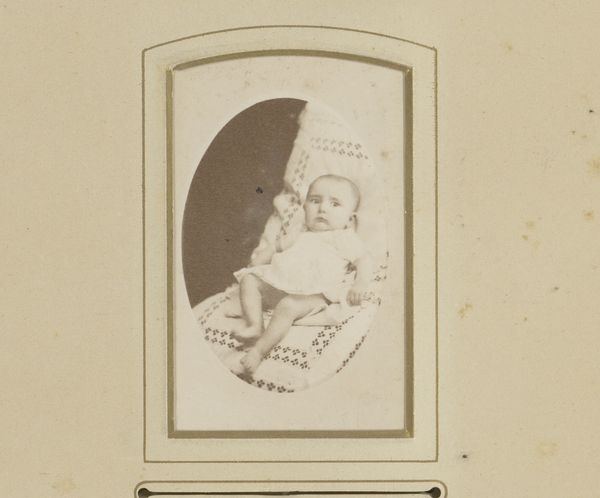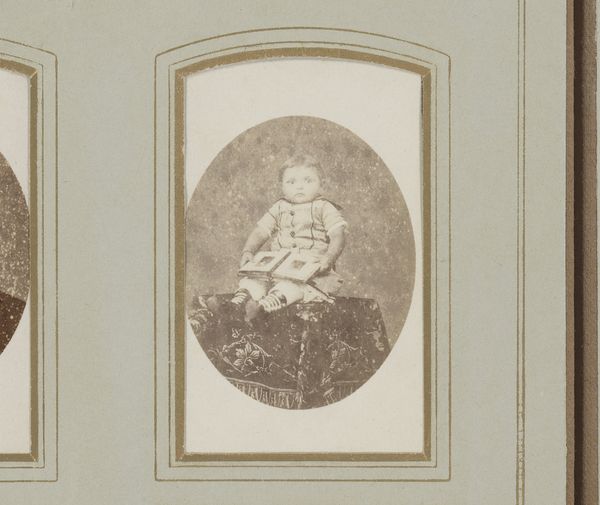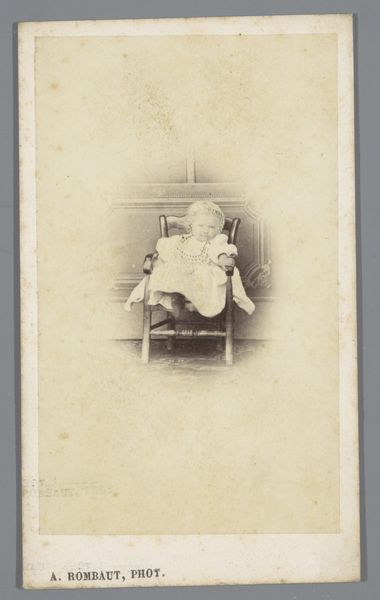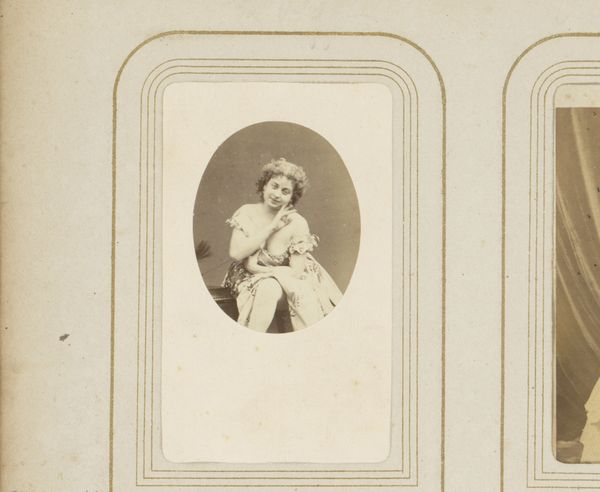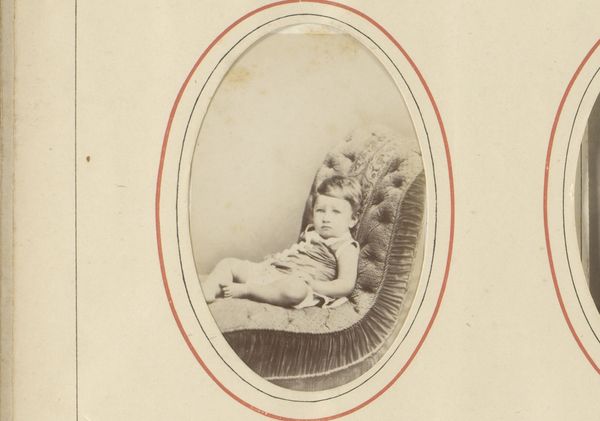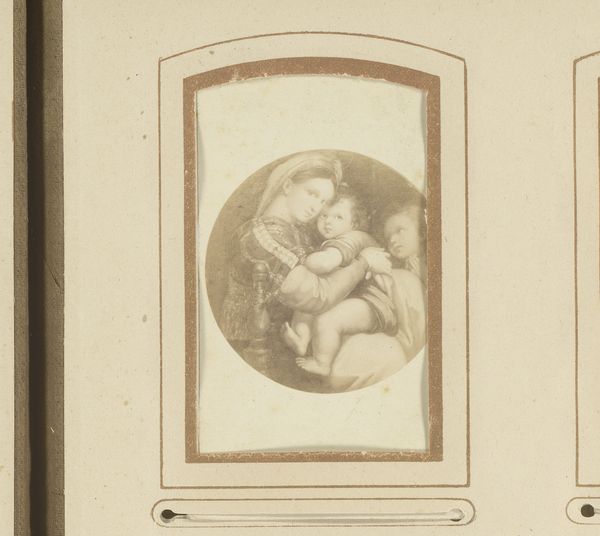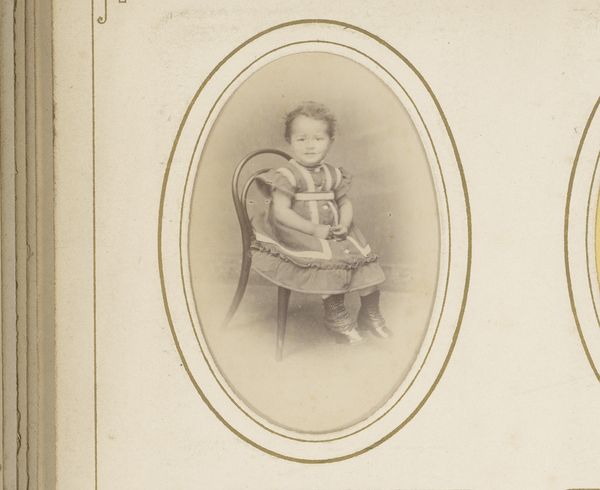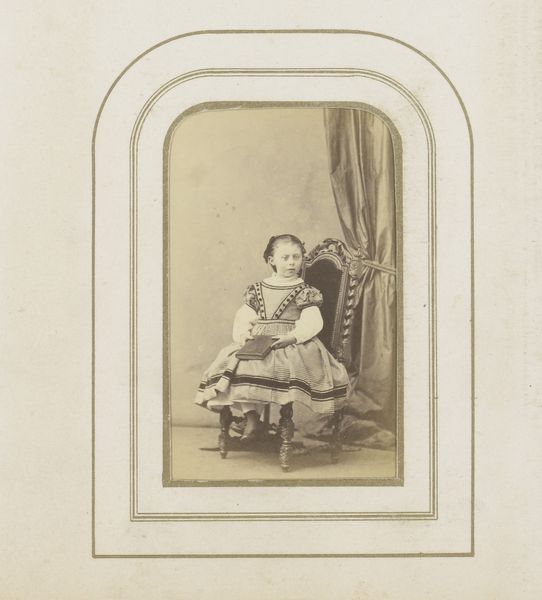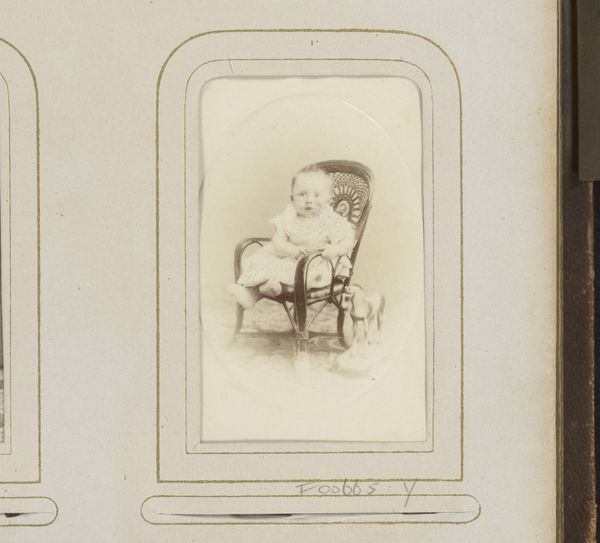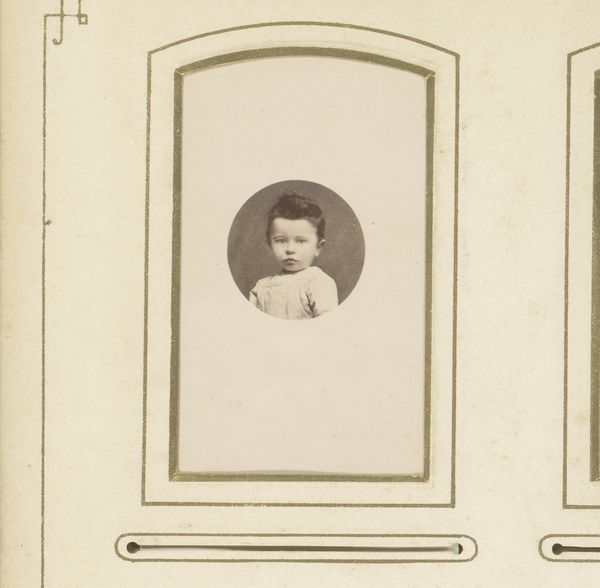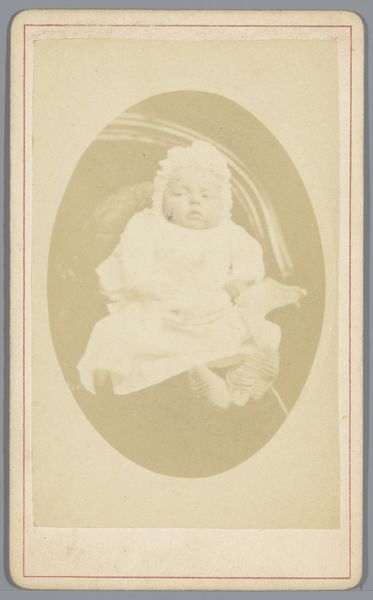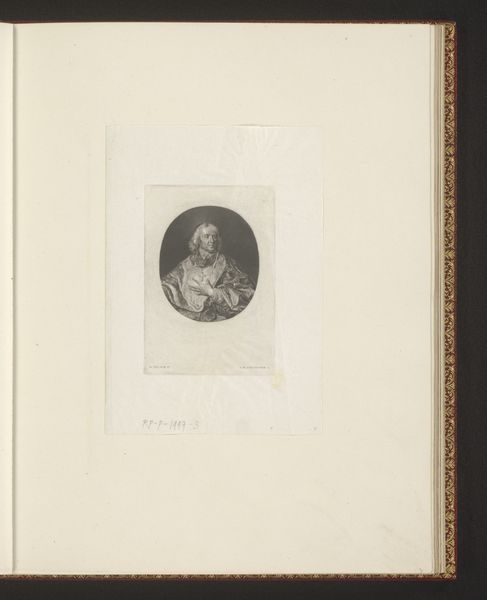
photography
#
portrait
#
photography
#
19th century
#
genre-painting
Dimensions: height 82 mm, width 52 mm
Copyright: Rijks Museum: Open Domain
Editor: Here we have Eugène Guérin’s "Portret van een baby", a photograph dating from between 1875 and 1885. There’s something so innocent and posed about it, capturing a moment for posterity. What do you find striking about it? Curator: What strikes me is its participation in a very specific historical moment. This kind of studio portrait, capturing childhood, became incredibly popular in the late 19th century. Think about the rising middle class, the growing emphasis on sentimentalism, and photography's increasing accessibility. The image isn’t just of a baby, but it also reveals a societal desire to document and celebrate domestic life. Editor: That makes sense. It's almost like this image reflects more than just one family's treasure. So what was it like to display images like this? Curator: Often, these images were collected in albums. This photograph could very well be found with other family photos in a household display, cementing the family's position in society, but also subtly presenting particular norms as both desirable and achievable. Consider how class, for example, could be subtly performed in photography during that period. Do you get that sense from the image? Editor: I think so! Especially knowing it was intended for public view within the home! I had originally considered this portrait to simply represent intimacy, but that's no longer the only possible interpretation. Curator: Exactly! Thinking about it this way changes how we engage with the piece. Photography has a long and influential social life, that persists today in digital form. Editor: I learned so much by shifting from an individual perspective to the broader historical and societal context. Curator: Precisely! This type of social, cultural and institutional historical view helps open the viewing experience, doesn't it?
Comments
No comments
Be the first to comment and join the conversation on the ultimate creative platform.
